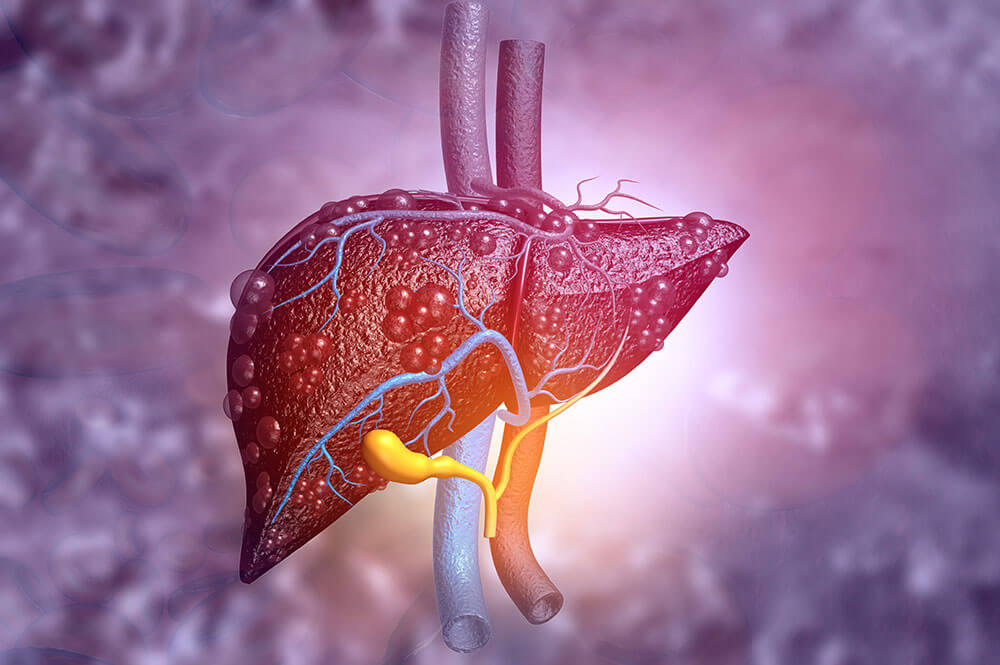

Fatty Liver Disease
3rd Apr, 2019
The liver is the second largest organ in the body. It is responsible for a variety of functions, including processing everything we eat and drink and filtering harmful substances from the blood. Too much fat in the liver leads to fatty liver which can result in permanent liver damage. The following is an outline of the causes, complications, prevalence and precautions of this tricky disease.
About fatty liver
Fatty liver is the accumulation of fat in the hepatocytes (vital cells of the liver that perform the metabolic, endocrine and secretory functions). Patients suffering from fatty liver are of two types. People having a history of alcohol abuse are diagnosed with Alcoholic Liver Disease (ALD) and those with no or minimal intake of alcohol with Non-Alcoholic Fatty Liver Disease (NAFLD). Some people with NAFLD can develop a far more serious condition known as Non-Alcoholic Steatohepatitis (NASH) in which the fat accumulation is associated with liver cell inflammation, damage and scarring of the liver. This potentially serious condition can progress to chronic liver disease, cirrhosis and occasionally liver cancer (hepatoma). Patients with NASH have a 15-20% chance of progressing to end-stage liver disease.
Causes
- Alcohol abuse
- Obesity
- Diabetes mellitus
- Dyslipidemias (abnormal levels of lipids in the blood)
- High cholesterol
- Drugs e.g. steroids, amiodarone, estrogen
- Nutritional deficits e.g. kwashiorkor (protein deficiency), starvation
- Infections e.g. chronic Hepatitis C
- Jejunoileal bypass (a surgical weight-loss procedure performed to treat morbid obesity)
- Indian childhood cirrhosis (childhood liver disease characterized by cirrhosis of the liver due to deposition of copper in the organ)
- Hereditary
India at risk
NAFLD is increasing exponentially in India with the below aspect of the modern Indian lifestyle predisposing the society to such a condition:
- Sedentary lifestyle with no or little element of physical exercise.
- Urban ‘obesity epidemic’
- Increased consumption of processed foods, sugary aerated colas/drinks and junk food
- Indians are genetically more susceptible to hyperinsulinemia, insulin resistance and truncal deposition of fat due to the presence of the starvation gene which preferentially stores fat.
- Rising incidence of type 2 diabetes mellitus
Prevention
- A healthy lifestyle including correct dietary choices, exercise, weight reduction, regular treatment for diabetes mellitus and regular health check-ups is the best way to prevent the progression of this disease. Other precautions include:
- Limiting sweets and sugary aerated drinks
- Eating more green vegetables, legumes, salads and fruits
- Non-vegetarians switching to lean meat and fish
- Exercising regularly
- Quitting alcohol and smoking
- Limiting fried and junk food consumption
Complications
Fatty liver is not a benign condition. Non-treatment can lead to:
- Liver cirrhosis
Cirrhosis is a complication involving loss of liver cells and irreversible scarring of the liver. The progression is not clearly defined, however most patients of cryptogenic/idiopathic suffer from fatty liver. - Chronic Liver Disease (CLD)
CLD is the progressive destruction and regeneration of the liver leading to fibrosis and cirrhosis. The percentage of patients who progress to CLD is estimated to be about 33%. It is postulated that there is a continuum of progression from fatty liver to CLD. - Hepatoma
A hepatoma is a common form of liver cancer. There is an estimated risk of 12-15% of patients suffering from fatty liver to develop hepatoma.
Medical Consultation
Consult a specialist when there is a progressive deterioration of the liver and also when there are signs of decompensation like jaundice, decreased urine, ascites (abnormal build-up of fluid in the abdomen), GI bleed and hepatic encephalopathy (decline in brain function due to severe liver disease).

